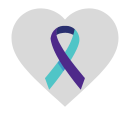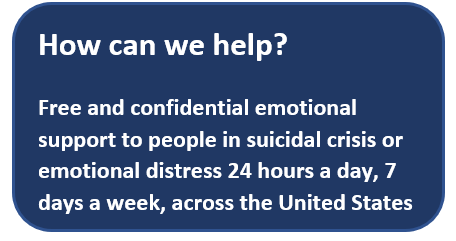Mental Health Resources for Transit Workers
Mental health, an important aspect of overall health and well-being, remains a difficult topic to discuss. FTA has compiled mental health resources to support transit industry workers during challenging times.
Click below to see a list of resources
- Mental Health, Wellness and Self-Care
- Suicide Prevention
- Active Shooter Preparedness
- Transit Agencies
- Webinars

Mental Health, Wellness and Self-Care
The resources below can help frontline transit workers and others in the transit industry address mental health concerns and support self-care in the wake of a traumatic or stressful event.
General
| Title | Description | Source |
|---|---|---|
| The Hidden Toll: Mental Health, Assaults, and Public Transit | Research report analyzing data to understand mental health as a factor in assaults on public transit, with recommendations to the public transit industry based on the project's findings. | Mineta Transportation Institute |
|
Mental Health, Wellness, and Resilience for Transit System Workers |
Detailed summary of common factors that influence the mental health, well-being and resiliency of frontline transit workers and includes a range of solutions that transit agencies can implement to address them.
|
National Academies of Sciences, Engineering, and Medicine |
| Your Healthiest Self: Wellness Toolkits | Highlights evidence-based tips for living well and improving your health. | National Institute of Health |
| Mental Health Awareness Month | Outlines several ways to support mental well-being and help others. | National Council of Mental Wellbeing |
| University of Kansas Medical Center | Handouts and self-care plans that recognize personal behaviors and identify when individuals may be experiencing mental health issues. | University of Kansas Medical Center |
| Tips for Talking With a Health Care Provider About Your Mental Health | Tips for speaking with a healthcare provider about mental health. | National Institute of Mental Health (NIMH) |
| Promote Employee Mental Health and Wellbeing | Webpage dedicated to topics like mental health, stress reduction, substance misuse and more. |
National Safety Council
|
| Mental Health Toolkit | Resources to help foster mental health-friendly work cultures. | U.S. Department of Labor |
| Caring for Your Mental Health | Self-care tips to manage stress, lower risk of illness and increase energy to maintain mental health and a good quality of life. | NIMH |
| Tips for Survivors of a Disaster or Other Traumatic Event: Managing Stress | Tips for preventing and managing stress when dealing with the effects of trauma, mass violence or terrorism. | HHS |
| Behavioral Health Treatment Services Locator | Confidential and anonymous resource for people seeking treatment for mental and substance use disorders in the U.S. and its territories. | HHS |
| Post-Traumatic Stress Disorder (PTSD) | Information about post-traumatic stress disorder (PTSD), including signs, symptoms, risk factors and treatment options. | NIMH |
| National Center for PTSD | Tips and treatment options for veterans with PTSD and those impacted by disaster and mass violence. | U.S. Department of Veterans Affairs (VA) |
| Emergency Responders: Tips for Taking Care of Yourself | Steps responders can take to ensure they are able to cope with challenging situations. | CDC |
| Disaster Distress Helpline: Get Immediate Crisis Counseling and Support | Counseling and support from the Disaster Distress Hotline to assist residents in the U.S. and its territories who are experiencing emotional distress related to natural or human-caused disasters. | Substance Abuse and Mental Health Services Administration (SAMHSA) |
| Office of the Surgeon General - Framework for Workplace Mental Health & Well Being | Connections between the well-being of workers and the health of organizations. | HHS |
| Research@BSPH | Evidence-based practices and strategies that can help employers support the mental health and well-being of employees. | Johns Hopkins University |
Psychological First Aid
| Title | Description | Source |
|---|---|---|
| PTSD: National Center for PTSD | Psychological First Aid is an evidence-informed modular approach to help children, adolescents, adults and families in the immediate aftermath of disaster and terrorism. Appendices include parent tips for helping infants and toddlers and resources for survivors. | VA |
| Psychological First Aid | Course that discusses how to provide psychological first aid to people in an emergency by employing the RAPID model: Reflective listening, Assessment of needs, Prioritization, Intervention and Disposition. | Coursera |

FTA issued Safety Advisory 22-4: Suicide Prevention Signage on Public Transit to encourage transit agencies to implement, update or expand suicide prevention signage and messaging campaigns that apply best practices for reducing suicide attempts. The safety advisory also recommends agencies assess and monitor the effectiveness of different signage approaches and make use of available data to guide transit agency activities on suicide prevention.
The resources below highlight free and confidential support for people in emotional distress and offer potential interventions for organizations.
| Title | Description | Source |
|---|---|---|
| Learning Center – Suicide Prevention Resource Center | Resources for suicide prevention including suicide prevention infrastructure, programs, online courses and more. | SPRC |
| Resource Library | National Action Alliance for Suicide Prevention | List of resources including toolkits, handouts, products, presentations, webinars and reports aimed at suicide prevention. | National Action Alliance For Suicide Prevention |
| Suicide Prevention Hotlines | Resources for suicide prevention including information about warning signs, risk factors, treatment and therapy. | NIMH |
| Frequently Asked Questions About Suicide |
Brochure that provides warning signs of suicide, ways to help prevent suicide and effective treatment options. |
NIMH |
| Warning Signs of Suicide | Article with downloadable infographic discussing the warning signs of suicide. | NIMH |
| 5 Action Steps for Helping Someone in Emotional Pain | Actions individuals can take to help someone in emotional pain. | NIMH |
| Suicide Prevention Toolkit | Social media content and promotional materials for mental health awareness. | SAMHSA |
| Suicide Prevention | Suicide prevention resources, publications and data sources. | CDC |
| SAMHSA 988 Suicide & Crisis Lifeline | Information on the background, history, funding opportunities and implementation resources for strengthening suicide prevention and mental health crisis services. | SAMHSA |
| National Strategy for Suicide Prevention: Federal Action Plan | Presents priority actions the federal government proposes to advance the goals and objectives outlined in the 2024 National Strategy for Suicide Prevention. | U.S. Department of Health and Human Services (HHS) Resource |
| FTA Standards Development Program: Mitigations for Trespasser and Suicide Fatalities and Injuries (Report 0227) | This report presents research focused on mitigation strategies and countermeasures that may be used by rail transit agencies (RTAs) to reduce trespasser and suicide fatalities and injuries, including RTA practices and practical and promising strategies and countermeasures. | Federal Transit Administration Resource |
Suicide Postvention
| Title | Description | Source |
|---|---|---|
| A Manager's Guide to Suicide Postvention in the Workplace: 10 Action Steps for Dealing with the Aftermath of Suicide | Guide with clear steps after a trauma, including methods for immediate response, e.g. a plan and long-term strategies to assist their employees. | Suicide Prevention Resource Center (not a federal resource) |
| Responding to Grief, Trauma, and Distress After a Suicide: U.S. National Guidelines | Recommendations for the development of suicide postvention at all levels of society in the U.S. | Suicide Prevention Resource Center (not a federal resource) |

Active Shooter Preparedness Resources
The resources below offer information to help frontline transit workers recognize indicators of potential workplace violence and understand actions to take when confronted by an active shooter.
| Title | Description | Source |
|---|---|---|
| Options for Consideration Active Shooter Preparedness Video | Video that demonstrates possible actions that individuals can take if confronted with an active shooter scenario. | Cybersecurity and Infrastructure Security Agency (CISA) |
| Active Shooter Preparedness Workshop | Active Shooter Emergency Action Plan (EAP) video that describes the fundamental concepts of developing an EAP for an active shooter scenario. | CISA |
| Warning Signs and What You Can Do | Tips for avoiding violence and ensuring the safety of individuals and their colleagues. | Department of Homeland Security |
| Active Shooter Emergency Action Plan | The Active Shooter Emergency Action Plan (EAP) video describes the fundamental concepts of developing an EAP for an active shooter scenario. | CISA |
| Active Shooter: What You Can Do | Interactive web-based course developed for non-law enforcement employees if confronted with an active shooter situation. | Federal Emergency Management Agency (FEMA) |
| Pathway to Violence | Factsheet and video highlighting the behavior indicators that assailants often demonstrate before a violent act. | CISA |
| Active Shooter Safety Resources | Description of the FBI’s jurisdiction in active shooter incidents which includes information and resources on various topics such as operational/victim assistance and campus attacks. | FBI |

Transit Agencies
These resources below offer information from transit agencies.
| Title | Description | Source |
|---|---|---|
| Suicide Prevention | Bay Area Rapid Transit | Suicide prevention page offering various resources for agencies, the media and community. | Bay Area Rapid Transit (BART) |
| Employee Assistance Program Resources | Resources on stress, mindfulness and more | Pittsburgh Regional Transit |
| May is Mental Health Awareness Month | Signs of stress and healthy ways to cope | Southeastern Pennsylvania Transportation Authority (SEPTA) |
| Sleep Better, Work Better | Tips to get quality sleep and establish healthy routines | Valley Metro (VM) |
| Recharge to be in Charge | Dangers of sleep deprivation and tips to get proper sleep | VM |
| Fight Fatigue Risks | Risks associated with fatigue and methods to combat fatigue | VM |

Webinars
| Title | Description |
|---|---|
| Recruitment & Retention to Support Transit Workers' Mental Health | Transportation Research Board webinar on the key stress factors affecting workers and other actionable solutions for agencies to improve working conditions. Presenters discussed how agencies can address the root causes of stress, develop effective mental health programs and implement strategies to enhance morale and build trust among frontline employees. |
| Suicide Prevention Signage on Public Transit | FTA webinar on Suicide Prevention Signage on Public Transit that includes an overview of current suicide trends and the impact on the transit industry and the use of signage as a countermeasure to mitigate suicide-related events on public transit. FTA was joined by speakers from the Substance Abuse and Mental Health Services Administration and the San Francisco Bay Area Rapid Transit District. |
| FTA webinar on Suicide and Mental Health Crisis Intervention on Transit that featured guest speakers from the Substance Abuse and Mental Health Services Administration, San Francisco Suicide Prevention, Bay Area Rapid Transit and Utah Transit Authority who shared tools and resources available, and experiences and lessons learned from successful interventions. |
Disclaimer
FTA has not assessed whether any of these resources meet applicable statutory or regulatory requirements. This list is provided for technical assistance only. Inclusion in this list does not imply endorsement or approval by FTA. Please email FTASafetyPromotion@dot.gov if you encounter any broken or outdated links.


